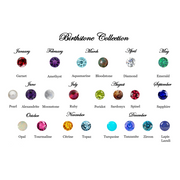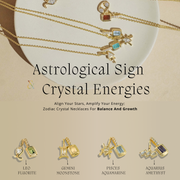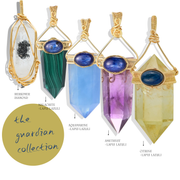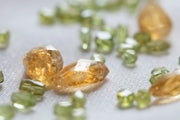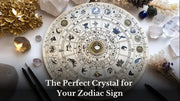Kyanite History
Ancient Origins
Kyanite, known for its shimmering blue blades and calming energy, is a powerful gemstone linked to clarity, communication, and spiritual alignment. Its name comes from the Greek word kyanos, meaning “deep blue,” referring to the mineral’s most famous color. Although not widely used in ancient civilizations compared to stones like jade or amethyst, Kyanite has long been valued by healers and metaphysical practitioners for its ability to balance energy and connect higher consciousness with grounded awareness.

Cultural Significance
With its strong connection to the throat and third eye chakras, Kyanite became known as a stone of truth, wisdom, and honest communication. In metaphysical traditions, it is believed to be one of the few crystals that does not hold negative energy and therefore never needs energetic cleansing. Because of its natural alignment properties, Kyanite has been used in meditation practices, energy balancing, and spiritual rituals to promote peace and intuitive awareness.

Symbolic Uses Through History
Kyanite symbolizes connection, restoration, and inner harmony. Its parallel crystal structure resembles flowing energy, symbolizing continuous balance and movement. As a spiritual stone, it is revered for bridging the gap between physical reality and higher guidance, promoting clarity, insight, and peaceful communication.

Table of contents
Origin

Brazil – A major source known for high-quality blue and indigo Kyanite with excellent clarity.
Nepal – Produces vivid, saturated blue stones often used in fine jewelry.
India – Known for deep blue and black varieties that are widely used in healing and meditation.
United States (North Carolina) – One of the earliest known deposits, producing classic blue Kyanite crystals.
Feature
Chemical Formula: Al₂SiO₅ — Kyanite is an aluminum silicate mineral with a unique crystal structure that creates its distinctive blade-like appearance.
Mohs Hardness: 4.5 to 7 — hardness varies depending on orientation; harder along its length and softer across its width, requiring careful handling.
Color: Most commonly blue, ranging from pale sky-blue to deep indigo. Kyanite can also appear in green, orange, black, and colorless forms. Its blue color is caused by iron and titanium impurities, giving it a luminous, shimmering quality.
Symbolism: Kyanite symbolizes clarity, alignment, and higher awareness. Spiritually, it represents truth, intuition, and peaceful communication.
-
Chakra:
Throat Chakra (Vishuddha): Enhances communication and self-expression.
Third Eye Chakra (Ajna): Strengthens intuition, insight, and mental clarity.
-
Zodiac:
Aries
Taurus
Benefits
Communication and Self-Expression
Kyanite is known as a powerful communication stone. It clears blockages in the Throat Chakra, enabling honest, calm, and confident self-expression. It helps individuals speak their truth without fear, making it ideal for speakers, writers, teachers, and anyone seeking to communicate with clarity and authenticity.
Mental Clarity and Insight
The stone enhances mental focus, intuition, and decision-making. Its high-vibrational energy helps clear mental fog, organize thoughts, and encourage rational thinking while also strengthening intuitive guidance. It is especially helpful for students, strategists, and creatives.
Emotional Balance
Kyanite promotes tranquility and emotional stability. It gently dissolves stress, fear, and frustration while promoting inner peace. Its balancing effect helps regulate emotional highs and lows, making it useful during challenging or overwhelming situations.
Energy Alignment and Chakral Cleansing
One of Kyanite’s most unique qualities is its ability to align all chakras instantly. It creates a natural flow of energy throughout the body, restoring balance and harmony. Many healers use Kyanite to cleanse the aura, release energetic blockages, and harmonize spiritual and physical bodies.
Spiritual Connection
As a Third Eye stone, Kyanite supports meditation and spiritual insight. It enhances psychic abilities, including intuition, lucid dreaming, and telepathic communication. Its calming frequency helps deepen meditation, improve dream recall, and connect with higher consciousness or spirit guides.
Protection and Aura Cleansing
Although gentle in energy, Kyanite acts as a strong cleansing stone. It protects against negativity and energetic interference. Because Kyanite does not absorb negative energy, it is considered self-cleansing and does not require purification like many other crystals.
Creativity and Inspiration
Kyanite stimulates creative flow by opening the mind to inspiration and new ideas. Its calming, clarifying energy supports artistic expression and problem solving. Writers, artists, musicians, and innovators often use Kyanite to enhance intuition and refine creative vision.
Type
Blue Kyanite
The most popular variety, known for its deep blue blades. Blue Kyanite symbolizes truth, communication, and spiritual clarity.
Green Kyanite
A heart-centered variety associated with emotional healing, compassion, and growth. It is used to balance emotional energy and strengthen connections.
Black Kyanite
A grounding and protective form often used in cleansing rituals. It resembles a fan or wing and is considered one of the strongest stones for cutting energetic cords.
Orange Kyanite
A rare type discovered in Tanzania, known for stimulating creativity, passion, and sacral chakra energy. It promotes vitality and motivation.
Indigo Kyanite
A deeper blue-violet variety associated with psychic awareness, spiritual activation, and deep meditation.
Care & Maintenance
Cleaning
Clean Kyanite gently with a soft, dry or slightly damp cloth. Avoid soaking it in water, using ultrasonic cleaners, or exposing it to harsh chemicals due to its variable hardness and cleavage.
Storage
Store Kyanite separately from harder stones to prevent scratches. Keep it in a padded jewelry box or wrapped in soft fabric to protect its delicate, blade-like structure.
Handling
Kyanite should be handled with care, as it can chip or split if struck or dropped. Remove jewelry during sports, manual work, or exposure to heat. For energetic cleansing, use sound healing, incense smoke, or moonlight—Kyanite does not need physical cleansing.
FAQs
Q: Does Kyanite need to be cleansed?
A: Kyanite does not hold negative energy and is considered self-cleansing, although many people still energetically refresh it through sound or moonlight.
Q: What does Kyanite symbolize spiritually?
A: Kyanite symbolizes clarity, truth, intuition, and energetic alignment.
Q: Can Kyanite get wet?
A: It is best to avoid getting Kyanite wet because water exposure can weaken its structure or cause fractures.
Q: Is Kyanite rare?
A: Most blue Kyanite is moderately available, but high-quality crystals—especially indigo or orange varieties—are rarer and more valuable.
Q: Can Kyanite be worn daily?
A: It can be worn daily, but with caution due to its variable hardness and potential to chip if struck.
Final Thoughts
Kyanite: Benefits, Properties and Meaning of the Stone highlight why this shimmering blue mineral is cherished for its ability to harmonize energy, enhance communication, and deepen spiritual awareness. From cleansing the aura to clarifying the mind, Kyanite supports both emotional and spiritual well-being. Its calming and high-vibrational energy encourages truth, inner balance, and intuitive insight. Whether used in meditation, kept as a cleansing tool, or worn as a talisman, Kyanite offers continuous alignment and peace—making it one of the most powerful stones for clarity and spiritual growth.

